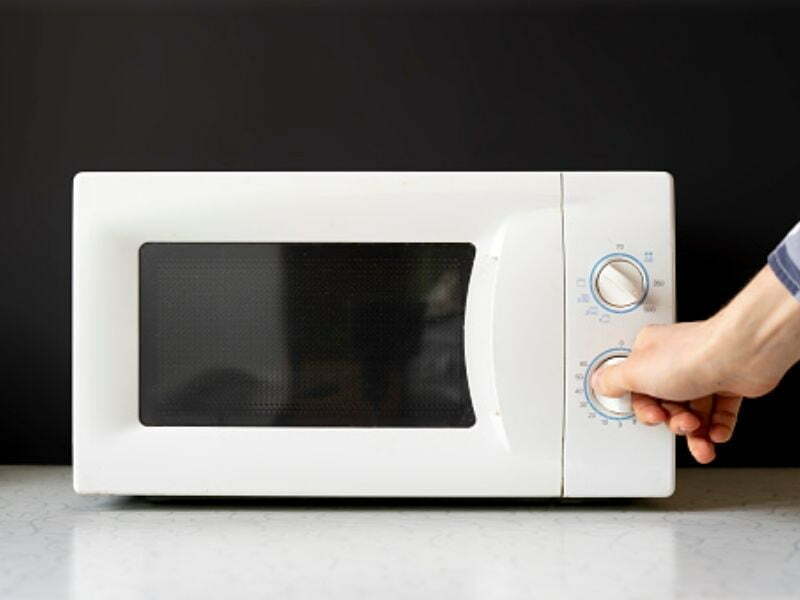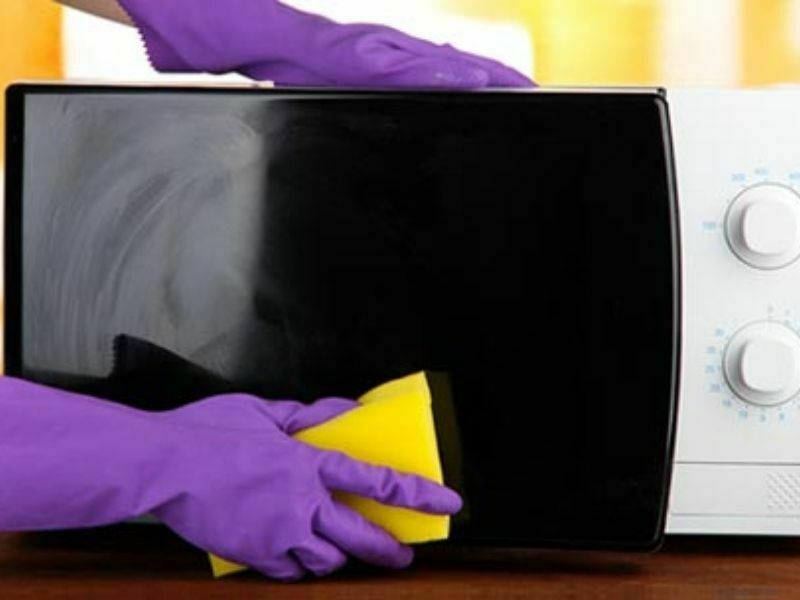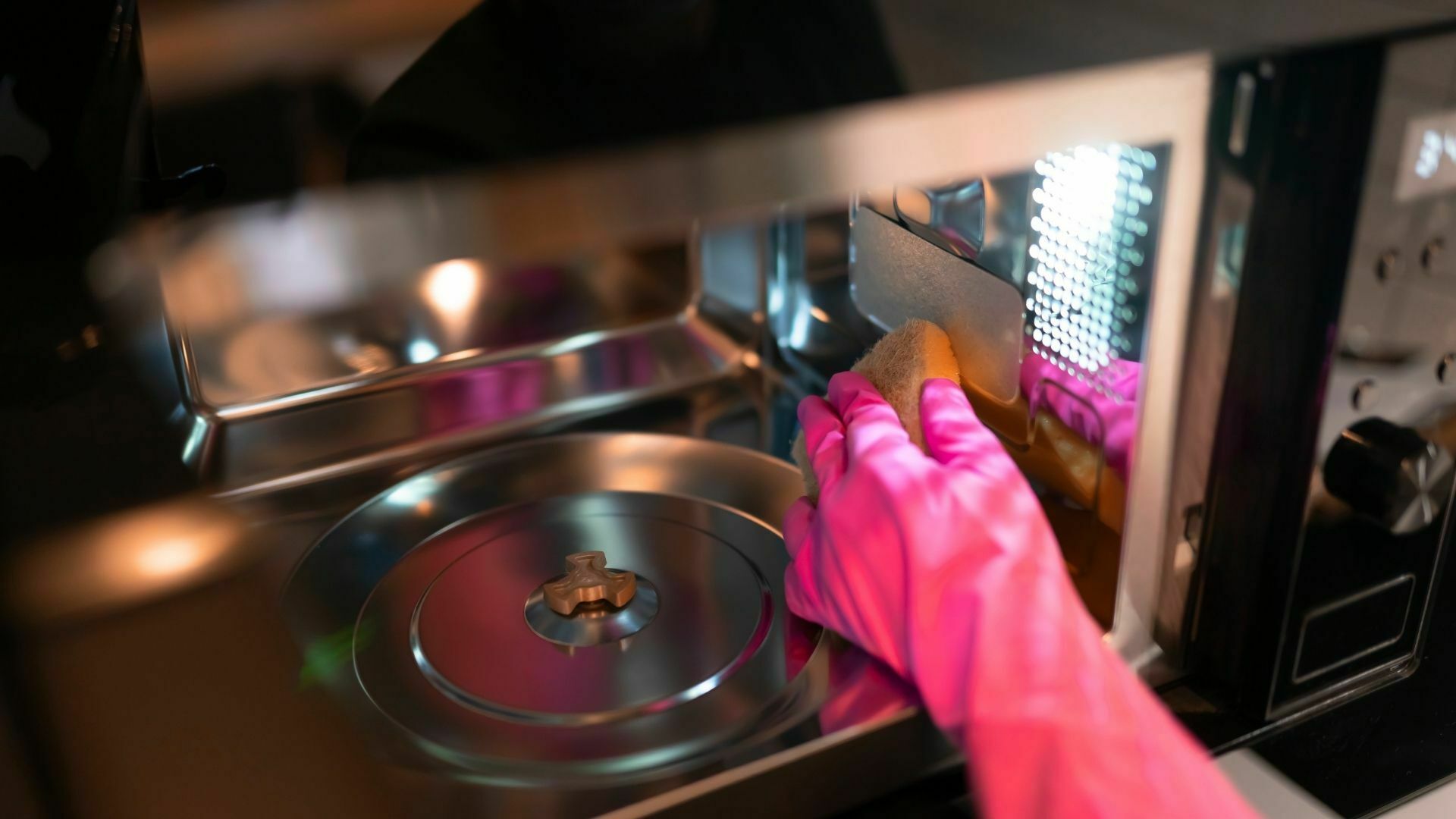Have you ever noticed that the microwave can become an awful mess after using it? All of the splatters and grime that develop and layer upon the interior of your microwave oven can be very unsightly, and they can make it very challenging to prepare your favorite foods in this appliance. There is no reason to simply put up with these unsightly messes. You can have a clean, shiny interior in your microwave oven once more by following this advice that discusses how to deep-clean your microwave properly.
What Is A Microwave?

Microwaves are a form of electromagnetic radiation with wavelengths ranging from as long as one meter to as short as one millimeter; with frequencies between 300 MHz (1 m) and 300 GHz (1 mm). Different sources define different frequency ranges as microwaves; the above broad definition includes both UHF and EHF bands. A more common definition in radio-frequency engineering is the range between 1 and 100 GHz. In all cases, microwaves include the entire SHF band at a minimum. Frequencies in the microwave range are often referred to by their IEEE radar band designations: S, C, X, K u , K, or K a band, or by similar NATO or EU designations.
The prefix micro- in the microwave is not meant to suggest a wavelength in the micrometer range. Rather, it indicates that microwaves are “small”, compared to wavelengths used in conventional (longwave) radio broadcasting, in that they have shorter wavelengths. The boundaries between far infrared light, terahertz radiation, microwaves, and ultra-high-frequency radio waves are fairly arbitrary and are used variously between different fields of study.
Why You Should Clean Microwave
Microwave is a popular and convenient invention. It seems that the appearance of microwaves has made our life easier. In fact, it is one of the most dangerous kitchen appliances.
The first reason why you should clean a microwave oven is that it contains harmful substances. Even if you don’t put any food into the device, there are still pathogens inside it. The whole body of the microwave is covered with harmful substances which can cause cancer and other diseases. That is why you should clean it regularly, especially if you use it often.
The second reason why you should clean the microwave is that the smell won’t disappear by itself and it will spread throughout all your kitchen, so that even your favorite food will taste disgusting. To avoid this unpleasant smell you should either clean the microwave or throw it away.
The third reason why you should clean the microwave is that no one wants to do it for you, so if you don’t want to be a lazybones, start cleaning now!
How Often to Clean A Microwave

Quite often. It is recommended that you give it some cleaning every 3 days.
The steam from the food can cause a build up of germs on the walls of your microwave.
How to Clean a Microwave With a Wet Paper Towel
Step 1: Use a wet paper towel to clean up any spills. Simply leaving a microwave dirty with food particles will cause the inside of the microwave to become stained and smelly. The longer you leave food particles in your microwave, the harder it will be to clean.
Step 2: Fill a small bowl with 1 cup of water. Place the bowl in the microwave and heat it for 5 minutes. This will soften any dried-on food and allow you to simply wipe it away with a paper towel.
Step 3: Remove the bowl from your microwave, unplug the appliance, and allow it to cool for several minutes before wiping down your microwave with a clean cloth.
How to Clean a Microwave With Dish Soap
Step 1: Remove the turntable and wash with a sponge and warm, soapy water. Rinse and dry.
Step 2: Add 1/4 cup of liquid dish soap to a bowl of 1 cup of water. Microwave on high for 5 minutes, until the solution boils. The steam will dissolve grease and grime, making it easy to wipe out later.
Step 3: Use a damp cloth or sponge to wipe away the loosened grime from the walls, roof and floor of the microwave. Wipe down the door gasket and inside the glass window, too.
Step 4: Dip a sponge into white vinegar and use it to remove any stubborn stains or stuck-on food crumbles from the interior of your microwave oven.
How to Clean a Microwave With Lemon
You have a microwave and you want to clean it. Don’t worry, we’ve got you covered. We’ll show you how to clean your microwave with lemon.
Cleaning supplies:
– 1 Lemon
– Paper Towel
Instructions:
Step 1: Slice the lemon in half. If it’s not juicy, give it a bit of a squeeze. You want it to be wet but not so wet that the juice is dripping all over the place.
Step 2: Place the lemon halves in a microwaveable bowl or mug and put them in your dirty microwave. Add water until it’s about half full, then turn on the microwave for two minutes on high power. The steam from the water will loosen up any grime and stains, while the citric acid from the lemon will neutralize any foul odors in your microwave.
Step 3: Once your timer goes off, let the mug or bowl cool for thirty seconds to a minute, then carefully remove it and wipe down your microwave with a damp paper towel or sponge.
How to Clean a Microwave With Baking Soda
Now, we’ll show you how to clean your microwave using baking soda and lemon.
Step 1: Mix the baking soda with water
Step 2: Combine the baking soda and water in a microwave-safe bowl or cup. Add about 1 tablespoon (14 g) of baking soda for every 2 cups (470 mL) of water. Stir the solution until the baking soda is dissolved.
Step 3: Place the container in the microwave
Step 4: Place your cleaning solution on a turntable in the microwave, or put it on a paper towel if your microwave does not have a turntable. Set the container in the middle of the microwave so that it is easy to reach from any side when you open the door.
Step 5: Microwave for 5 minutes
Step 6: Turn on your microwave and set it to cook for 5 minutes at full power, which will bring your solution to a rolling boil. If you want to disinfect your microwave as well as remove stains, choose a setting that heats up food quickly so that it gets very hot inside during this step.
How to Clean a Microwave With Vinegar And Water?
The microwave is one of the most important appliances in your kitchen. It is used when you are in a hurry, to warm food or to cook meals quickly. It is also one of the easiest appliances to clean, especially if you use vinegar and water.
Step 1: Fill a microwave-safe container with 2 cups of water and 2 tablespoons of white vinegar. If you have hard water, add 1 teaspoon of salt to the solution.
Step 2: Place the container inside the microwave and set the timer for 5 minutes; this will allow the steam from the vinegar-water solution to condense on the walls, ceiling and floor of the microwave.
Step 3: Remove the container carefully from inside the microwave, as it will be hot.
Step 4: Wipe down all interior surfaces of your microwave with a damp sponge or paper towel. The vinegar solution will break up any dried-on food particles for an easy wipe-down.
Tips to Keep Your Microwave Safe
To clean the microwave, fill a microwave-safe bowl with 1 cup of water and a little white vinegar. Place it in the appliance and heat for about 5 minutes or until the solution boils. Leave it to stand for 3 to 5 minutes. Remove the bowl, wipe away the dirt, and polish with a soft cloth.
The best way to clean your microwave is by using a microwavable bowl filled with water and vinegar, says Jones. “Place it in the microwave and heat on high for 5 minutes or until boiling,” she adds. “Then leave it to stand for 3 to 5 minutes.” This will soften any caked-on food so that you can easily wipe it away with a damp cloth or sponge.
Newspaper can also be used to clean microwaves, says Jones. “This is because newspaper contains ink that doesn’t dissolve in water and detergent,” she explains. Wipe over your microwave with a damp piece of newspaper, then dry it thoroughly with another piece of paper before polishing with a soft cloth.
Conclusion
All of these steps are safe for your microwave and will help you to deep clean it. Brushing away food particles and splattering liquids can, over time, cause a layer of grime to build up on the inside that won’t wipe away so easily. By following these steps, you will ensure your microwave is free of residues, ready to use again.

